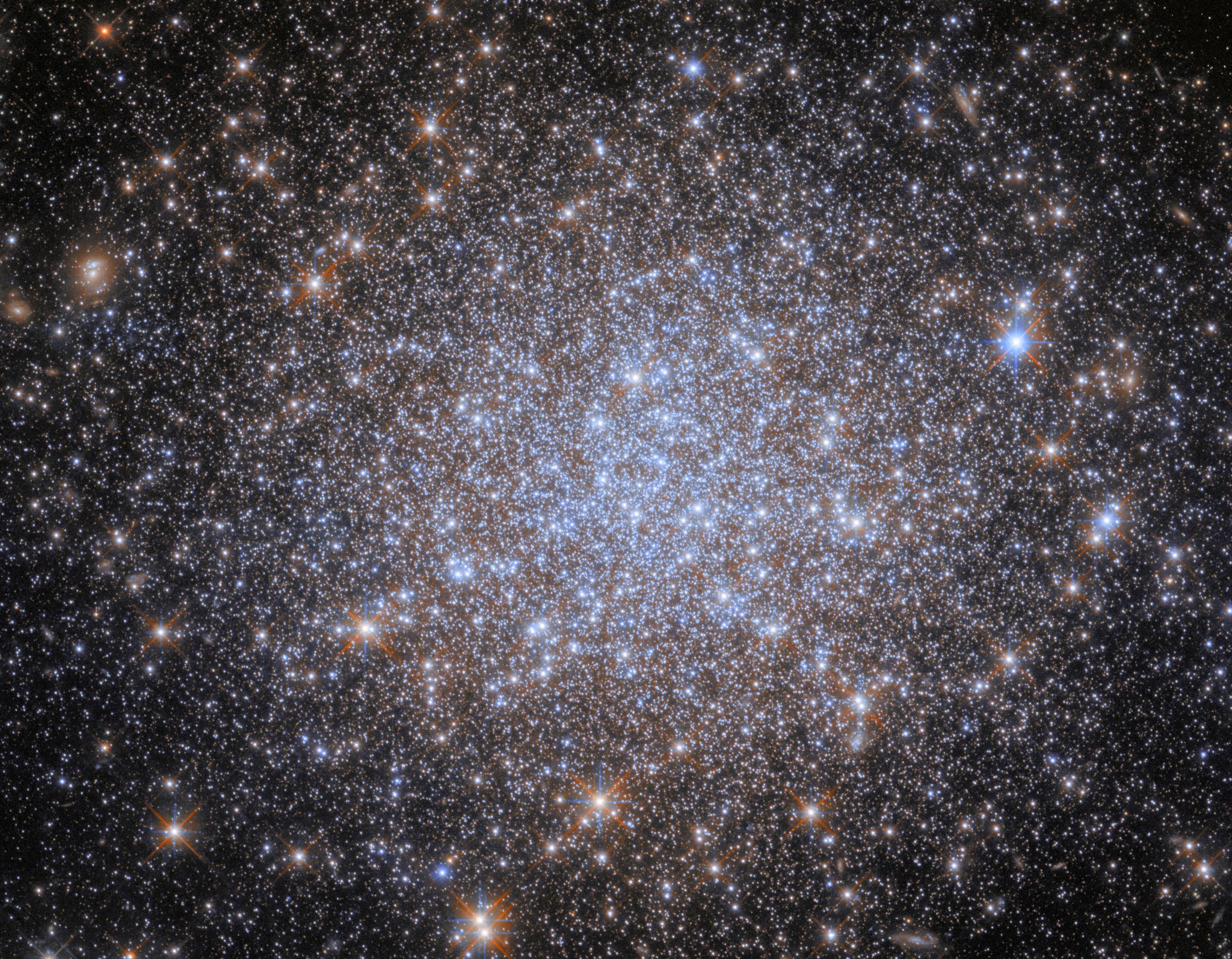
This densely populated group of stars is the globular cluster NGC 1841, which is part of the Large Magellanic Cloud (LMC), a satellite galaxy of our Milky Way galaxy that lies about 162,000 light-years away. Satellite galaxies are bound by gravity in orbits around a more massive host galaxy. We typically think of the Andromeda Galaxy as our galaxy’s nearest galactic companion, but it is more accurate to say that Andromeda is the nearest galaxy that is not in orbit around the Milky Way galaxy. In fact, dozens of satellite galaxies orbit our galaxy and they are far closer than Andromeda. The largest and brightest of these is the LMC, which is easily visible to the unaided eye from the southern hemisphere under dark sky conditions away from light pollution.
The LMC is home to many globular clusters. These celestial bodies fall somewhere between open clusters – which are much less dense and tightly bound – and small, compact galaxies. Increasingly sophisticated observations reveal the stellar populations and characteristics of globular clusters are varied and complex, and we have yet to fully understand how these tightly packed groups of stars form. However, there are certain consistencies across all globular clusters: they are very stable and hold their shape for a long time, which means they are generally very old and contain large numbers of very old stars. Globular clusters are akin to celestial ‘fossils.’ Just as fossils provide insight into the early development of life on Earth, globular clusters such as NGC 1841 can provide insights into very early star formation in galaxies.
Text credit: European Space Agency (ESA)
Media Contact:
Claire Andreoli
NASA’s Goddard Space Flight Center, Greenbelt, MD
claire.andreoli@nasa.gov
from NASA https://ift.tt/xOBMkmi


No comments:
Post a Comment